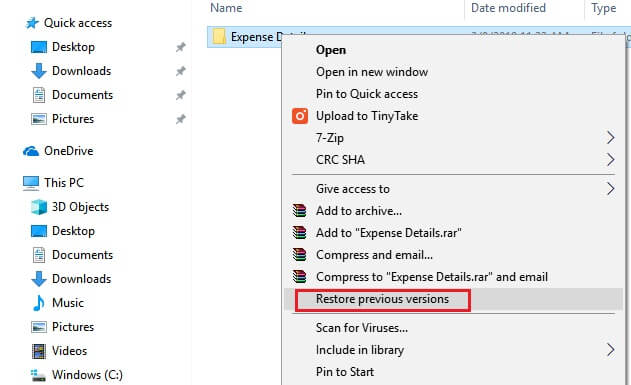How to Recover Ransomware Encrypted Files in Windows 10? – Solved
Ransomware is a type of virus that targets people’s personal files and encrypts their data. The victim can restore it by paying the offender a ransom.
Ransomware may infiltrate Microsoft 365 in two ways:
- The first possibility is that the user receives an email with a malicious attachment or link. You can launch the ransomware by clicking the link or opening the attachment.
- Another factor is the system’s vulnerability. The ransomware emerges by delivering a malicious network packet to the user’s machine.
How Does a Ransomware Attack Appear?
Some samples of ransomware messages are as follows:
- “A virus has infiltrated your computer. To fix the problem, go here.”
- “Your system was used to visit websites having illegal content. You must pay a $100 fine to unlock your computer.”
- “Your computer’s files are encrypted. To regain access to your data, you must pay the ransom within 72 hours.”
Ransomware attacks are becoming more common, as are the amounts demanded ransom. An attack on businesses that have critical data can cost them millions of dollars. As a result, it is critical for businesses to be aware of the ways that can assist them in restoring files encrypted by ransomware. Because these data are saved on the system’s hard drive, you can use a professional tool be to recover ransomware encrypted files in Windows 10.
Ways to Recover Ransomware Encrypted Files in Windows 10
1. Expert Method to Recover Ransomware Encrypted Files
To recover your files that are encrypted because of ransomware, you can use the Windows Data Recovery Software. This tool helps to quickly recover important pictures, videos, music files, documents, data files, and other objects from any Windows system. It can also keep the original structure and content intact while using this tool. You can recover deleted videos from computer and it also support these file formats such as FAT and NTFS.
You may also use this application to extract and save certain folders from the retrieved deleted HTML Files from hard drive.
To have a deeper understanding of the tool, follow the steps below:
- Select the partition and, if desired, either Scan or Formatted Scan.

- In the panel, you will see a detailed view of your Recover deleted CCTV data from hard drive.

- Navigate to the location where you want to store the restore permanently deleted data from laptop

2. Restore From Backup
Simply recover encrypted files in windows 10 from the backup you had made earlier is the quickest approach to recover from ransomware.
For this, you must have a recent version of your data and programs that do not include the ransomware you are presently infected with for this technique to function.
Before proceeding with the restore, ensure that the ransomware has been removed. Typically, this is accomplished by resetting your systems to factory defaults.
3. Windows System Restore
If you use Windows, you may be able to restore files encrypted by ransomware using the Windows System Restore program. This application saves point-in-time backups of your Windows devices, which you may restore if necessary.
To make use of this tool, follow these steps:
- Select System and Security from the Control Panel.
- Then, select Backup and Restore.
When you choose “Restore files from backup,” you will be directed to a wizard that will assist you in completing the procedure.
4. Restore from the Previous Versions
The earlier version of the file can also aid in the recovery of ransomware-encrypted files.
- Find the directory in which the data is kept. Right-click the file and choose “Properties.”

- When the Properties box appears, click the “Previous Versions” option.

You must install the client if you do not see the Previous Versions tab. You can contact your support staff to get the proper client installed. - A list of the file’s available snapshots will display. Choose the snapshot that reflects the file’s most recent known good version.
- Click “View” to ensure that the file is the proper version. Once you’ve located the correct file, you can do one of the following:
View: Open the recovered file and save it by selecting “File” > “Save As.”
Make a copy of the recovered file in the same directory as the original. You will now have access to both copies.
Restore: This will replace the current file with the recovered encrypted files in windows 7.
How to Protect Your Data from Ransomware?
The most efficient approach to defend your computers from ransomware is to keep them from being deployed in the first place. The next best approach is to predict how it will infiltrate your systems and what data will be targeted.
The methods below might assist you in developing a good ransomware data recovery strategy:
- Inventory of your Data: Create an inventory of your data to decide how it should be classified and where it should be kept. Critical, valuable, restricted, or proprietary are some examples of categories. Once you have an inventory, you may decide how data should be secured and begin data backup.
- Identify your Endpoints— You must know where your endpoints are in order to determine where ransomware outbreaks may originate. Endpoints, like data, may be classified to establish priority and ensure high-value endpoints are adequately secured.
Wrapping Up
It is very difficult for users to recover ransomware encrypted files in Windows 10. Thus, in this article, a few methods are shared using which you can get your data back. Choose the method as per your need.



